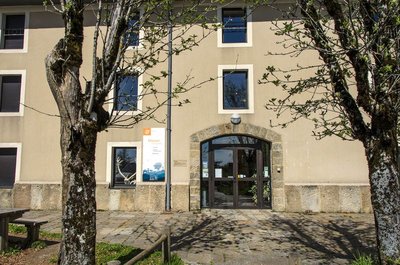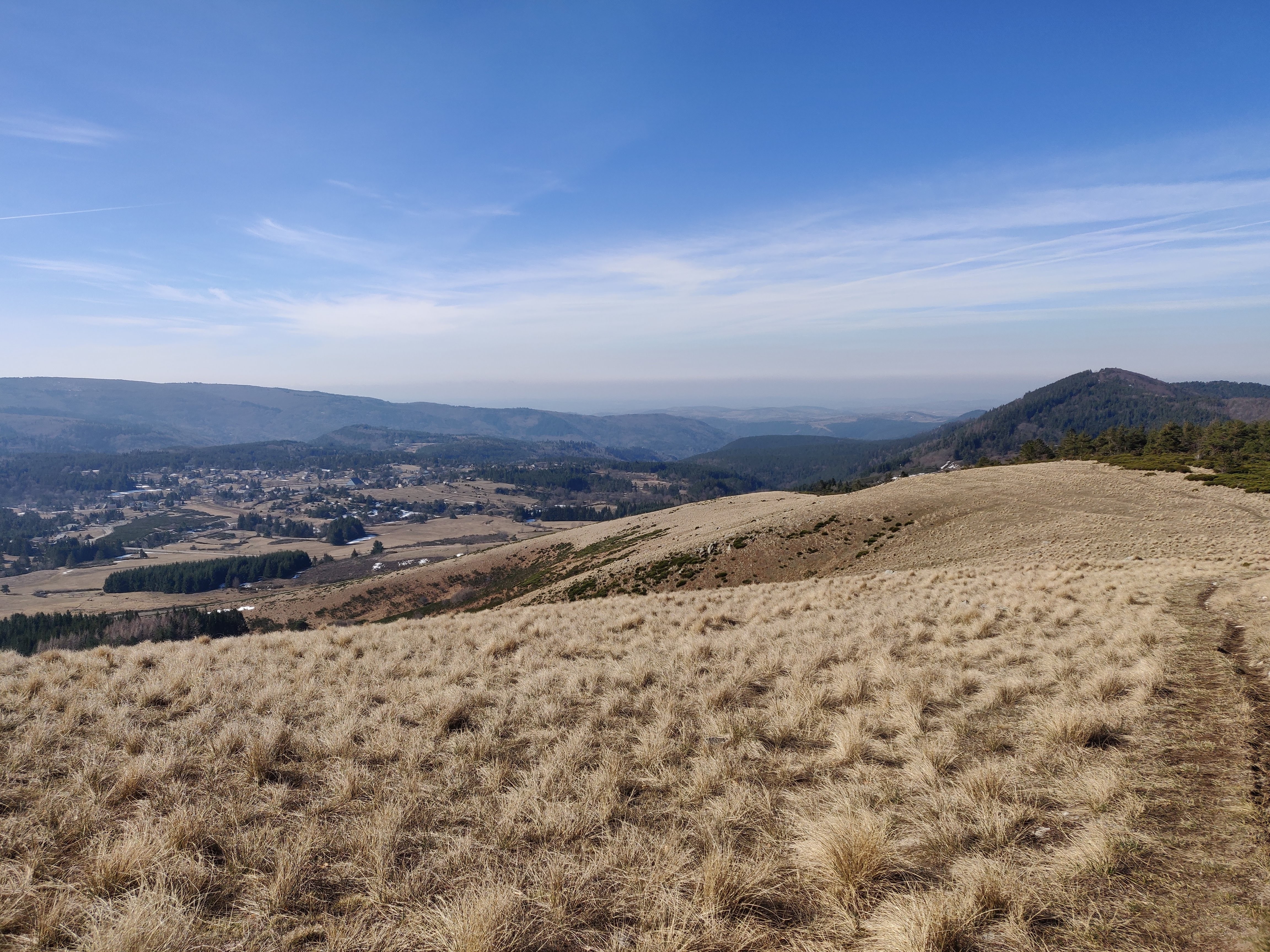
MTB 9 - The 5 Bonheur passes
13 points of interest
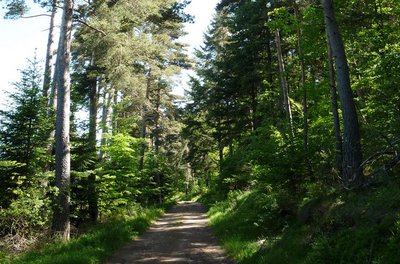
Chemin dans la forêt - Michel Monnot  Natural environment
Natural environmentBeech trees and the Mont Aigoual forest
Beech is the main species of the Mont Aigoual forest, which consists of a large variety of trees adapted to the diverse soil types and exposure. Like most deciduous trees, beech stumps put out many shoots after a tree has been felled. Foresters select the best of these for timber. Old beeches can attain remarkable sizes, such as the beech in Le Suquet forest in the municipality of Camprieu, a vestige of the original forest that has come down to us through the centuries and has a circumference of six metres and a height of 25!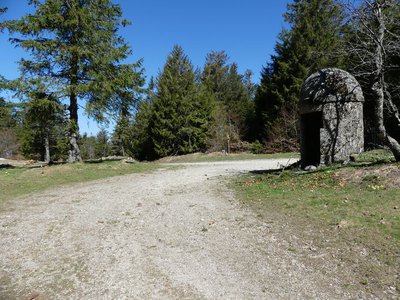
Col de la Caumette - nathalie.thomas  History
HistoryThe salt road
La Caumette pass is on a former salt road. From Antiquity to modern times, salt has been a precious merchandise used for preserving food and tanning leather. Salt has always been traded and taxed during its transport inland from the Mediterranean coast. The sentry box at the pass was built in the 16th or 17th century at a strategic point at the crossroads of several roads, both to levy the salt tax and for surveillance against smuggling.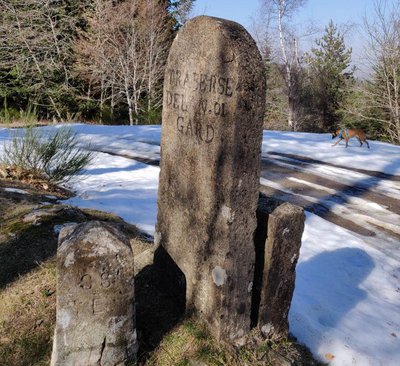
Route Royale - Béatrice Galzin  History
HistoryFrom canons to the King’s Road
Have you noticed that you are on an ancient path?
Let’s plunge into history… Around the year 1000, this track was called Camin Ferrat and was used by transhumant shepherds and their flocks, pilgrims and merchants between Meyrueis and Le Vigan. From the latter, it passed through Mandagout, L'Espérou and the Col de la Serreyrède pass before descending to Bonheur Abbey and going back up to La Croix de Fer and reaching Meyrueis. This important mule track enabled trade between the Mediterranean and Meyruies. The Baron de Roquefueil, the region’s lord, had an abbey built below it, in the Bonheur valley, to aid travellers lost in the mountains. In the late 11th century, he founded a religious community of six canons who performed religious services and, in bad weather, rang the “bell for the lost” at regular times to guide passers-by in danger. The Abbey was abandoned in 1790. In the 18th century, the Camin Ferrat was disused in favour of the King’s Road, which you follow from the Col de la Caumette pass to Meyrueis. This new route went via the Col de la Serreyrède and the Col de la Caumette, after which it followed the ridge. The wall that you walk alongside from La Caumette and La Croix de Fer might be a vestige of the King’s Road or else the limit of the Bonheur Abbey estate. The secret remains, only our ancestors knew…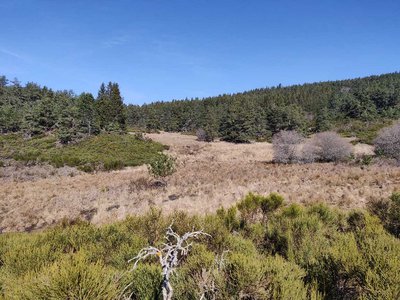
Zone humide - Béatrice Galzin  Water
WaterWetlands
Above the path, the soft sound of trickling water… These are wetlands, a fragile zone that must be protected. The peatbog is made up of rushes, sedge and many types of moss, such as sphagnum. Numerous insects live here, such as the large marsh grasshopper and dragonflies, as well as the common frog. If you make little noise, you may see deer here, or other animals that have come to cool down.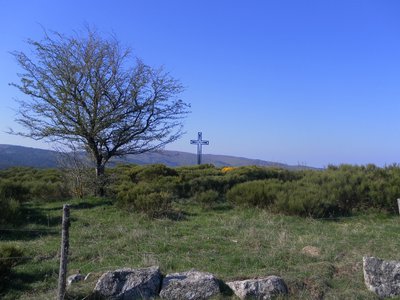
Col de la croix de fer - nelly Carel  History
HistoryCol de la Croix de Fer pass
At the col de la Croix de Fer pass, which is a strategic crossroads of several tracks, there used to be an inn for travellers. The magnificent ruin with its two impressive vaults was also a sizeable farm, owned by the Baron de Roquedols. It was located at the limit of the municipalities of Meyrueis and St-Sauveur-Camprieu on the route of the Camin Ferrat and the King’s Road. In the days of religious persecution, the preacher François Vivens* organised secret Protestant gatherings in the small valley just below the buildings. (*Vivens was killed in 1692, 10 years before the Camisard War)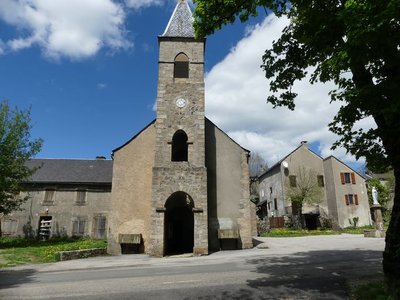
Camprieu - nathalie.thomas  History
HistoryCamprieu
In the 19th century, the village streets were bustling year-round with a throng of artisans, labourers and shopkeepers, who lived in these modest mountain houses that were also suitable for livestock rearing. Camprieu had: two cobblers, six clog makers, two basket makers, one carpenter, two wheelwrights, two farriers, one miller, two stonemasons, one glassworks, one sawmill, one dairy, two grocer’s shops, a haberdashery and ironmonger’s and one shop for ladies’ “fashion and dresses”. There was also a cheese cellar that produced Roquefort until 1932, a hotel and an inn.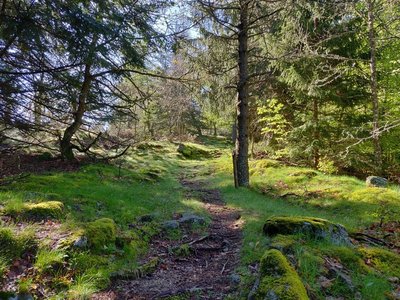
Sous bois du Trévezel - Béatrice Galzin  Natural environment
Natural environmentThe Mont Aigoual forest
“Aigoual, Forêt d’Exception”
The French Forestry Office, which manages state forests, launched a programme in 2013 called “Aigoual, Forêt d’Exception” (Aigoual: An Exceptional Forest) with the aim of highlighting the massif’s natural and cultural heritage. The Forestry Office thus tries to foreground the different aspects of its multi-facetted management: production, protection and receiving visitors. One key aspect of this approach, which complements other initiatives by local actors, is to improve visitors’ experience in the forest.
Hêtraie vers Camprieu, Aigoual - © Olivier Prohin  Natural environment
Natural environmentThe Aigoual forest
In the 19th century, Mont Aigoual was almost totally bare of trees. Intensive use of the forest and the pressure of transhumant grazing together with the harsh local climate caused devastating floods. The rich vegetation of the grazing grounds was replaced by heather pastures and many gullies. In the valleys huddling at the foot of Mont Aigoual, terrible floods pushing tons of stones downstream carried off roads and pastureland. In response, a reforestation programme was launched in the second half of the 19th century, which created the forest you see today. Nowadays, the forested Aigoual massif protects the valleys while at the same time providing a space for economic production, biodiversity and leisure.

 Natural environment
Natural environmentIrregular forest
This tree population consists of trees of very different diameters, ages and heights. Species are mixed: mainly pine, but also beech, rowan and whitebeam. This is an irregular mature forest, a forestry dynamic that is interesting for several reasons: it creates permanent forest cover; resistance to soil erosion; better resilience against storms or parasite attacks; regular production, etc. In the small clearing to the left of the path, the sunlight now penetrating to the forest floor has made natural regeneration of beech and fir possible, ensuring the renewal of the forest.

 Know-how
Know-howProductive forest
Marker 2
Another method of creating a durable forest cover is to plant or sow. This work is carried out either on bare soil or among existing tree stands. The Aigoual reforestation programme was a gigantic effort, requiring 900,000 days of work, the planting of 60 million conifers and 7 million deciduous trees, and sowing of 38 tonnes of seeds. Spruces and pines, which can be planted in full sunlight and grow quite quickly, were widely used. Under the forest canopy, preference was given to firs.
Maison forestière de la Serreyrède - © Jacques de Joly AgricultureLa Serreyrède
Before 1861, the house at the Col de la Serreyrède was inhabited by two families of farmers. They owned some livestock and had a vegetable garden, whose terraces you can still see above the La Caumette track. From 1861 on, the farm was inhabited by a forest ranger. It was only bought by the state body Eaux et Forêts in 1883, to be turned into a forester's house. It became one of Georges Fabre's headquarters during the reforestation of the Aigoual massif. The Cévennes National Park, tourism office and Terres d'Aigoual growers have now joined forces to revive La Serreyrède with the help of the Communauté de Communes Causses Aigoual Cévennes – Terres solidaires.
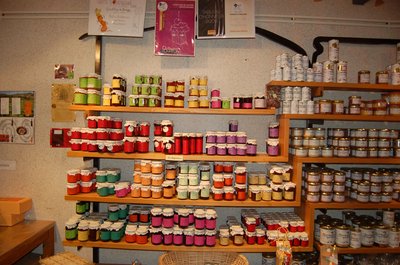
Boutique des producteurs - © Nathalie Thomas AgricultureThe association "Terres d'Aigoual"
The Cévennes National Park rents out part of the building to the association, enabling local farmers to sell their products directly to the public. The association brings together farmers who wish to promote what they produce and share their know-how. They also enjoy sharing their vision of farming- high quality produce and products,
- human-sized farms,
- mutual aid.
Come and discover their products!

 History
HistoryFrom beech copse to mature plantation
Marker 1
Around 1850, before reforestation began, the inhabitants of the Cevennes were using local wood resources on a massive scale for heating and in industry, especially spinning-mills. Gradually, only a few beech copses remained, which were cut every 25 to 40 years. Grazing by tens of thousands of sheep further reduced the herbaceous plant cover. Much weakened, the plant cover was then also subjected to heavy precipitation, the so-called Cevenol episodes. It is against this backdrop that the lengthy work of the foresters began. To reduce risks and establish a lasting forest cover, the first technique was to make use of what was already present by converting the disused copses into mature plantations.
Description
Starting from "Station de Prat Peyrot", head towards "La Croix de Fer" on the GR® 6 trail via the two crossroads “Les Fayards” and “Col de la Caumette”.
1) On your descent, make sure to turn left onto the single-lane path and continue to “La Croix de Fer”; leave the GR® 6 behind.
2) At "La Croix de Fer", turn left towards "L’Aubespi", "Perte de Bramabiau" and "Mairie".
3) At the "Mairie", turn right, go through the village towards "La Croix basse", "Camprieu", then towards "Maison du bois" via “Le Cros”, “Tabarde”.
4) At the "Maison du bois", head towards "Col de Faubel" via "Tailladette", "Taillade", "Bois de l'Agre".
5) At the "Col de Faubel" pass, go towards “Col de l’Espérou” via "La pépinière", "Montlau", then turn towards "Col de la Serreyrède" via "Serre de Favatel", "Le Trevezel".
6) At the "Col de la Serreyrède" pass, climb back up on the drovers’ road (GR® 7) to "Station de Prat-Peyrot" via "Le Fangas".
This circuit is taken from the guidebook Massif de l’Aigoual, published by the communauté de communes Causses Aigoual Cévennes as part of the collection Espaces naturels gardois and the label Gard Pleine Nature.
- Departure : Part Peyrot
- Arrival : Part Peyrot
- Towns crossed : Meyrueis, Val-d'Aigoual, Saint-Sauveur-Camprieu, and Dourbies
Forecast
Altimetric profile
Recommandations
Before committing yourself to a circuit, ensure that it is suitable for your activity level and ability. You must wear a helmet. Protective equipment is recommended. Respect other road users and stay in control of your speed and trajectory. Make sure your equipment is appropriate for the day’s weather conditions. Remember that the weather changes quickly in the mountains. Take enough water. Please close all gates and barriers behind you. No off-roading.
Information desks
Tourism & national parc'house
Col de la Serreyrède, 30570 Val d'Aigoual
The Maison de l'Aigoual houses the tourism office Mont Aigoual Causses Cévennes and the Maison du Parc national. This visitor centre provides information on and raises awareness of the Cévennes National Park, its sites and events as well as the rules that must be observed in the National Park's central zone.
On site: changing exhibitions, video projections, Festival Nature events and shop Open year-round
Transport
Access and parking
Parking :
Calculateur d'itinéraire Lio
Utilisez le calculateur liO pour organiser votre trajet en région Occitanie.
Autres régions
Calculez votre itinéraire en Auvergne Rhône Alpes sur Oùra
Biodiversité autour de l'itinéraire
Source

Report a problem or an error
If you have found an error on this page or if you have noticed any problems during your hike, please report them to us here:



